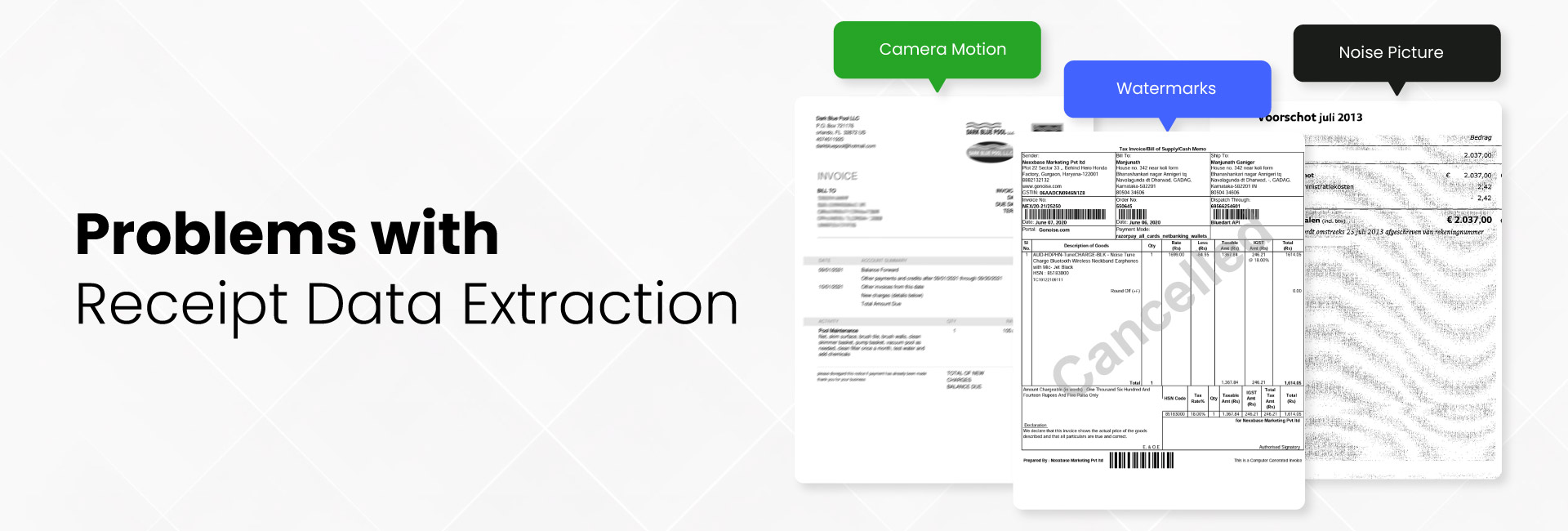Your Receipt Data Extraction Is All Wrong: Why and How to Fix It
Are you relying on outdated or inaccurate receipt data extraction methods? In today’s data-driven world, efficient and accurate processing of receipt information is crucial for expense management, accounting, and business intelligence. However, many businesses are unknowingly using methods that lead to significant errors, wasted time, and ultimately, flawed decision-making. This article will explore the common pitfalls of receipt data extraction and provide solutions for achieving accurate and reliable results.
The Perils of Poor Receipt Data Extraction
Inaccurate receipt data extraction stems from a variety of sources. Ignoring these issues can lead to significant consequences:
- Manual Data Entry: This is time-consuming, prone to human error, and scales poorly. The more receipts you handle, the greater the chance of mistakes creeping in.
- Optical Character Recognition (OCR) Challenges: While OCR technology has improved, it struggles with poor image quality (blurry, crumpled receipts), unusual fonts, and complex layouts. This often results in incorrect data transcription.
- Lack of Data Validation: Extracted data often isn’t verified against known information (e.g., comparing extracted totals to expected amounts). This allows errors to propagate through the system.
- Inconsistent Data Formatting: Receipts come in various formats and styles. If your extraction process can’t handle this variability, accuracy suffers.
- Integration Problems: Successfully extracted data needs seamless integration with accounting software or other business systems. Failure here creates bottlenecks and inefficiencies.
Common Errors Found in Poorly Extracted Receipt Data:
- Incorrect amounts: Misreading numbers is a frequent occurrence, leading to inaccurate financial reporting.
- Missing or incomplete information: Crucial details like vendor name, date, or item descriptions might be omitted.
- Data type mismatches: Dates might be misinterpreted as numbers, leading to errors in analysis.
- Duplicate entries: Poorly designed systems can lead to duplicate entries of the same receipt, skewing financial data.
Strategies for Accurate Receipt Data Extraction
Moving towards accurate and efficient receipt data extraction requires a multi-pronged approach:
- Invest in Advanced OCR Technology: Look for OCR solutions specifically designed for receipt processing. These often incorporate machine learning and AI to improve accuracy, especially with challenging receipts.
- Implement Data Validation Rules: Develop a system to automatically check extracted data against expected values. This includes cross-referencing totals and comparing against known vendor information.
- Standardize Receipt Capture: Encourage employees to take clear, well-lit photos of receipts. Provide guidelines on best practices for image capture.
- Embrace Automation: Automate as much of the process as possible. This reduces manual intervention and minimizes human error.
- Choose the Right Software: Select software that integrates seamlessly with your existing accounting and business intelligence systems. This ensures a smooth workflow and reduces data silos.
- Regularly Monitor and Improve: Continuously monitor the accuracy of your data extraction process and make adjustments as needed. This might involve retraining your OCR system or improving data validation rules.
Conclusion
Accurate receipt data extraction is not merely a technical task; it’s a critical component of effective financial management and business decision-making. By addressing the common pitfalls discussed above and implementing the strategies outlined, businesses can significantly improve the accuracy and efficiency of their receipt processing, leading to better insights and more reliable financial reporting.
FAQs
Q1: What is the best OCR software for receipt data extraction?
A1: There’s no single “best” software. The ideal choice depends on your specific needs and budget. Research different options, considering factors like accuracy, integration capabilities, and pricing. Many providers offer free trials, allowing you to test their software before committing.
Q2: How can I improve the quality of my receipt images?
A2: Ensure good lighting, use a stable surface, and take clear, straight-on photos. Avoid shadows and blurry images. Consider using a dedicated document scanner for consistently high-quality results.
Q3: What are the potential costs associated with inaccurate receipt data extraction?
A3: Inaccurate data can lead to errors in financial reporting, causing delays in tax filings, missed expense reimbursements, and potentially even legal issues. It can also lead to poor business decisions based on flawed data analysis.
Q4: Can I automate the entire receipt processing workflow?
A4: While full automation might be challenging, significant automation is achievable. Many solutions combine OCR, data validation, and integration capabilities to streamline the process significantly, reducing manual intervention to a minimum.
Q5: How often should I review the accuracy of my receipt data extraction process?
A5: Regular reviews are crucial. The frequency depends on the volume of receipts processed and the complexity of your system. Aim for at least a monthly review, adjusting the frequency based on your findings and any changes implemented.



